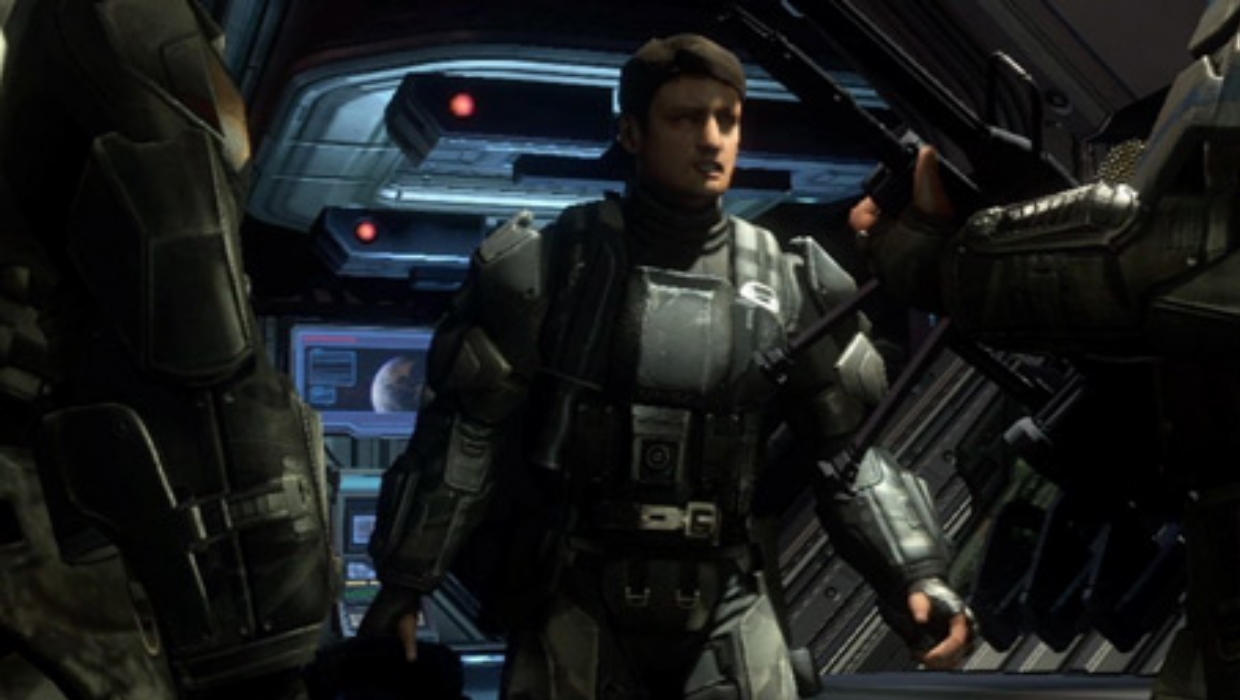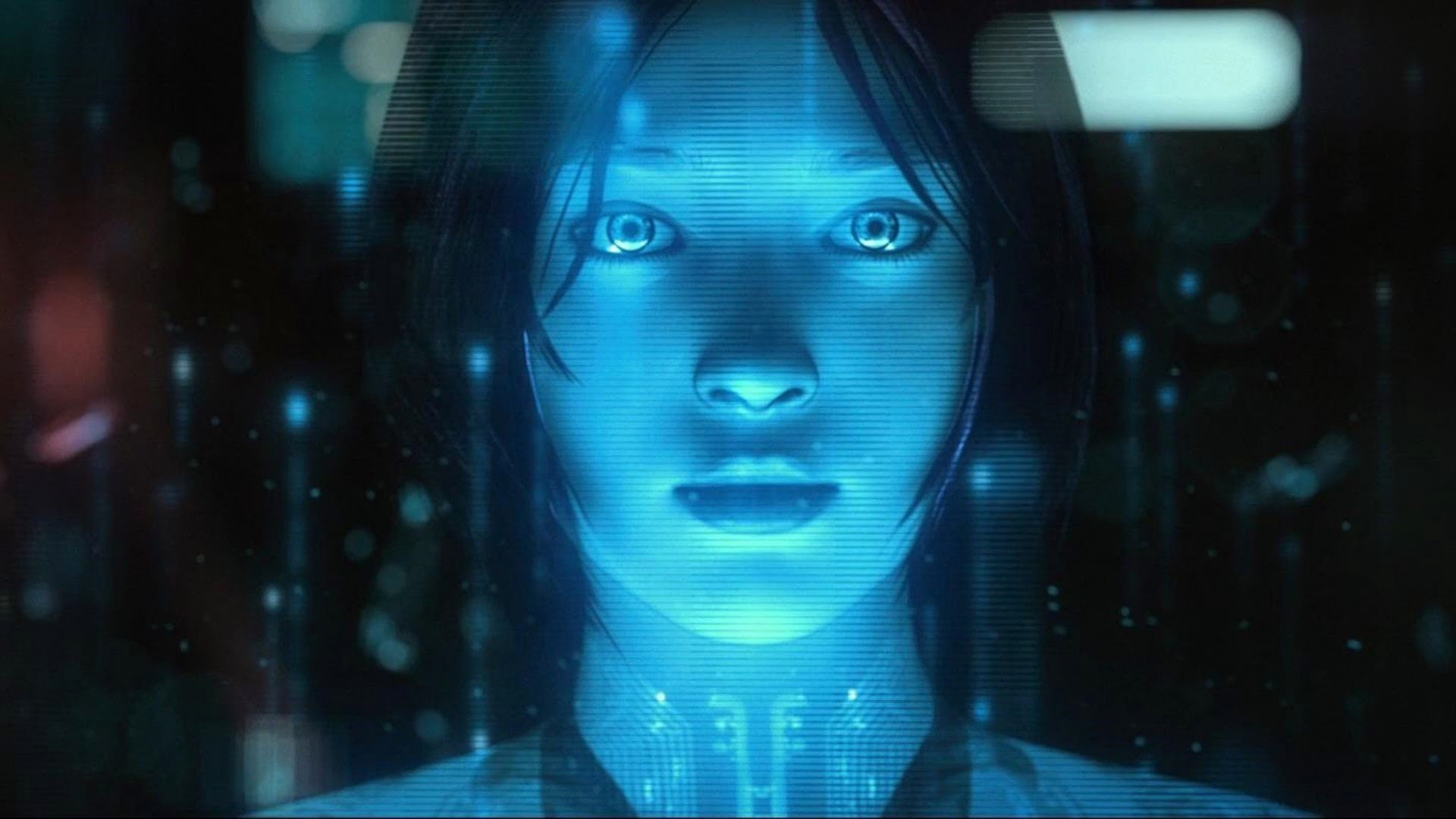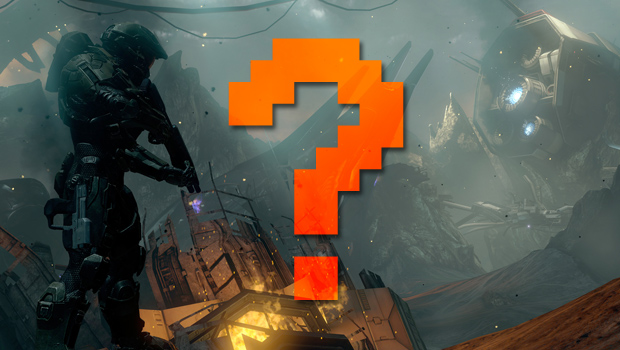Halo trivia: Think you know everything about Master Chief?

Deeper secrets than the Forerunners
Halo has arrived on Xbox One with The Master Chief Collection and Halo: Nightfall, with a Halo 5: Guardians on the horizon. The Master Chief Collection in particular is a grand celebration of everyone's favorite Spartan, and makes one extra nostalgic for one of the most popular game characters of this millenium. However, the collection of classic games only scratches the surface of Halo's greatest secrets.
From Halo's unexpected arrival as the must-play game on the original Xbox, to the series upcoming rebirth on the Xbox One, there's so much that went on behind the scenes that you never knew about. From unknown cameos and Steve Jobs, to rewritten endings and super secret Easter eggs that weren't found for years, I'll take you through some of Halo's most compelling trivia. Let's begin with some of the oldest info...

Halo was first planned to be an RTS, then a third person shooter
Most console fans barely knew of Bungies existence before Halo: Combat Evolved made it famous, but Mac owners in the 90s knew them well. If you were gaming on Apple devices during the dark era before iPods, Bungie gained notoriety for the Mac exclusive RTS game Myth, along with genre-pushing FPS titles Marathon and Durandall. When planning its next project in the late 90s, the developers at Bungie first wanted to stick with the Myth formula, planning the game that would be Halo as a spiritual successor.
It's easy to see the RTS style still prevalent in Halos world design, with three warring factions and the hierarchically designed unit types that you expect from similar games like Starcraft. A Halo RTS would become a reality in the unfortunate misfire Halo Wars some years later, but in those early days, Bungie ditched the genre to make the game a third-person shooter. That was the prevailing gameplay style when the game was demoed at E3 2000, but that situation would soon change, as would its publisher.

And it was originally announced as a Mac exclusive
Bungie's earliest successes - the aforementioned Myth, along with twin FPS Marathon and Durandal - were all on the Mac in the mid-'90s. The team was considered one of Apples most cutting edge supporters, and when it was ready to reveal Halo to the world, it happened at MacWorld 1999. Introduced by none other than Steve Jobs himself (the first person to say the series name publicly), Halo was presented as the "cool" game that showcased the power of Macintosh and the OpenGL platform. Bungie co-founder Jason Jones then presented a reasonable facsimile of Master Chief in his third-person form, with the game planned for release on Macs in early 2000.
Of course, that wasn't meant to be thanks to Microsoft. By mid-2000, Microsoft had bought Bungie outright, transforming Halo into an FPS that would come to PC and company's first ever gaming console. Steve Jobs was reportedly furious about losing Halo to his biggest competitor, and seeing how big Halo became for Microsoft, it's not hard to imagine why. Of course, Apple is doing just fine without Halo, and one does have to wonder if the series would have thrived in the relatively small realm of Mac gaming in the days before iOS.

Comedians make cameos all over the place
Halo is one of the most popular hardcore series around, with a diverse collection of fans. Among those millions are some select funnymen who appear to enjoy using Energy Swords in between telling jokes. A number of comedy geeks have come aboard from time to time to assist Master Chief in finishing the fight, making cameos that many players may have missed.
Among the names is David Cross of Arrested Development and Mr. Show fame. He popped up in Halo 2 as one of many nameless space marines, a role some might not expect from the same man that played a soft soul like Tobias Funke. Halo 2 also featured MadTV star and 7-Up spokesman Orlando Jones, who plays the gruff Sergeant Banks, a role he reprised in Halo 3. But the king of the goofy comedian cameos is talk show host Conan O'Brien. The former Simpsons writer took on his clueless gamer persona when he and sidekick Andy Richter recorded a scene for Halo 4 that offers some self deprecating commentary on the series.

Halo's developers have some obvious love for Firefly
Like many geeks, I have a soft spot for Joss Whedon's short-lived series Firefly and the follow-up film, Serenity. The rich world and compelling characters left a mark on many of its viewers, including Halos creators. When Bungie was casting for Halo 3: ODST, it filled title with Firefly mainstays, making for a cast reunion that's the next best thing to the show getting another season.
Nathan "Mal" Fillion, Alan "Wash" Tudyk, and Adam "Jayne" Baldwin all appear in ODST as marines, with faces based on the stars likenesses just in case the cameos werent obvious enough for some players. Their characters even say numerous lines that super fans will recall from the series, like the fictional swear "Gorram" popping up here and there. Fillion would go on to reprise his role as Buck in Halo: Reach, but why stop with those three? Surely Summer Glau and Gina Torres have something to add to the Halo Verse. Maybe 343 Industries isnt as fervently dedicated to the show.

Cortana was originally written with an English accent
Cortana is such a constant in the series, with more dialogue than probably any other character in the Halo universe. Fans are so used to her voice by now that's it hard to imagine anyone but Jen Taylor playing the character. That's not true for her creators, because they originally envisioned Cortana speaking with an English accent.
The devs have said that during Combat Evolveds casting actresses auditioned for the role using English accents, and you can see remnants of Cortana's old style of speaking when she says, "Sod off!" in the first game. Perhaps the devs just preferred Jen Taylor's more natural way of speaking, though that doesnt mean she's not skilled at changing up her voice. Until very recently, Taylor also played Princess Peach in multiple Nintendo titles, but many people missed that two of gaming's most famous women shared the same voice.

Halo 2 had a different ending planned
In 2004, few games were as hotly anticipated as Halo 2, with hype at a fever pitch on release day. People were so in love with the multiplayer that many were able to overlook the fact that the ending is one of the most anti climactic in gaming history. What should be a tense cliffhanger is more like an abrupt cut as Master Chief simply says he's "finishing this fight" before the screen cuts to black. Had things gone according to plan, the ending would have been very different.
The game ends with Master Chief landing on the Covenant ship ready to kick ass, and the plan was for players to experience that ass kicking in the final stage. But to hit the heavily anticipated release date, that stage, along with other stages and scenes, were scrapped. Bungie staff kept the recorded dialogue for the original ending, but don't expect to hear it any time soon, if ever. Looks like the perfect ending will have to stay confined to your fanfic.

Hints of Destiny are in Halo 3: ODST, and no one noticed for years
It was major news in 2007 when Bungie left Microsoft to become an independent developer. Fans dealt with the mixed emotions of sadness over Bungie exiting the Halo series, and excitement at the potential of Bungie making something fresh. It would be the better part of a decade before players got to experience that new concept in Destiny, but Bungie was clearly already thinking of its next game as far back as 2009's ODST.
Years before the public knew its name, Bungie was hinting at its future series plans in Halo. Within ODSTs Mombasa Streets and Firefight levels are multiple promotional posters that say "Destiny Awaits." If that isn't obvious enough in retrospect, the propaganda also features the key Destiny imagery of The Traveller orbiting the Earth. Pretty clever of Bungie. Makes you wonder if Destiny is hiding any secret references to the game Bungie will finish in 2035.

A version of Halo was developed for DS
It seems like Microsoft will never chase Nintendo and Sony into the portable games market with an Xboy of its own. The company is so disinterested that it actually allowed first party titles Viva Pinata and Banjo Kazooie to go to the Nintendo DS and Game Boy Advance, respectively. There were even plans for s DS Halo port, but that never got past the prototyping stages.
As the story goes, a major publisher was interested in licensing Halo for the portable, and had a developer create a functional level in the hopes of winning Microsoft over. Based on footage, the demo featured Halo 2s dual wielding guns and recreations of famous stages like Zanzibar, with the health, shield, and ammo stats filling the bottom screen. Microsoft passed on the portable port job, leaving this bit of vaporware to languish in obscurity until the game press dug it up in 2007 right before Halo 3s release. I have to say, it looks a little more fun than the smartphone version of Halo: Spartan Assault.

Stop now or risk rampancy
And if you're looking for more Halo info, check out our Halo: The Master Chief Collection review and the newest info on Halo 5: Guardians.

Henry Gilbert is a former GamesRadar+ Editor, having spent seven years at the site helping to navigate our readers through the PS3 and Xbox 360 generation. Henry is now following another passion of his besides video games, working as the producer and podcast cohost of the popular Talking Simpsons and What a Cartoon podcasts.


